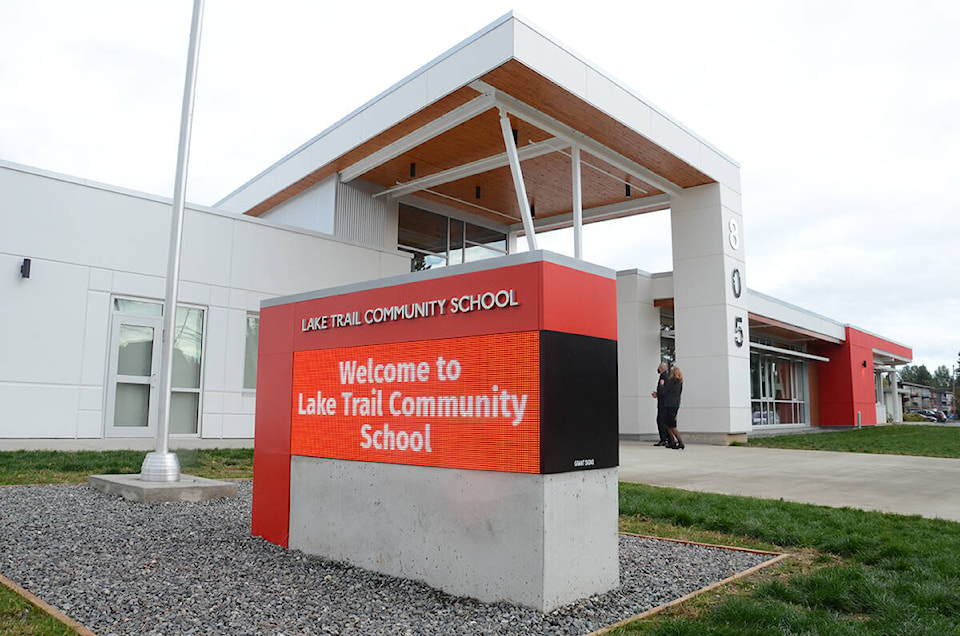Some on the Comox Strathcona Waste Management board are questioning why timber from the old gymnasium at the new Lake Trail school in Courtenay was not salvaged.
Will Cole-Hamilton, a Courtenay council representative, brought up the matter at the Oct. 21 board meeting, expressing some disappointment the school district did not deconstruct the gym floor so that the old timber could be reused.
“This kind of flooring is highly sought-after,” he said.
The most recent gymnasium for the school was retained, but during the seismic retrofit at Lake Trail, the previous gym space, built in the 1950s, was taken down.
Board member Brenda Leigh, a Strathcona Regional District representative, noted how when Maple Elementary School in her electoral area closed, they worked with a deconstruction company to find ways to recycle many items. She said they were able to use gym flooring in the new fire hall in Oyster River.
“It really warmed my heart,” she said. “It can be done through the right channels.”
CSWM senior manager Vivian Schau told the board they are engaging with municipal partners and other stakeholders to look at gaps in how to encourage re-use.
Members of the board mentioned there could be educational or communications opportunities for CSWM around the issue of deconstruction of building materials.
The Record spoke to Ian Heselgrave, the School District 71 director of operations, who said the nail and glue assembly of the old floor posed challenges for reuse, as did the presence of hazardous materials common in construction during the 1950s.
“The challenge for us is there’s a bunch of issues,” he said.
On top of this, the school district is funded by the Ministry of Education for capital projects, so they have to operate within financial boundaries that would make the additional cost and time for some reclamation of materials difficult.
“Deconstruction is a slow, laborious process, and it’s expensive,” he said.
RELATED STORY: Principal gives a guided tour of new facility
Heselgrave also pointed out the district did find ways to repurpose materials from the old Lake Trail building. The district’s tradespeople went though the building for a couple of weeks in the summer and were able to remove sinks, doors, handles, PA systems or anything they thought they could use in the future.
“We did a significant amount of salvage,” he said. “It gives us spare parts.”
They also pulled out some floor joists from the two-storey part of the old building, and the old fir will be available for use on school projects such as building benches.
In addition, the district struck up a partnership with UBC’s civil engineering program, which has a grant for seismic testing, so district staff were able to remove a large wall section and another from the roof to send to the university for research. In this case, the program will be able to do real-life testing of materials from a school from the 1950s. With many schools from that era still around, it should provide answers on how materials from the past respond to seismic activity decades later.
“That’s a real contribution to the future,” Heselgrave said.
mike.chouinard@comoxvalleyrecord.com
Like us on Facebook and follow us on Twitter.
